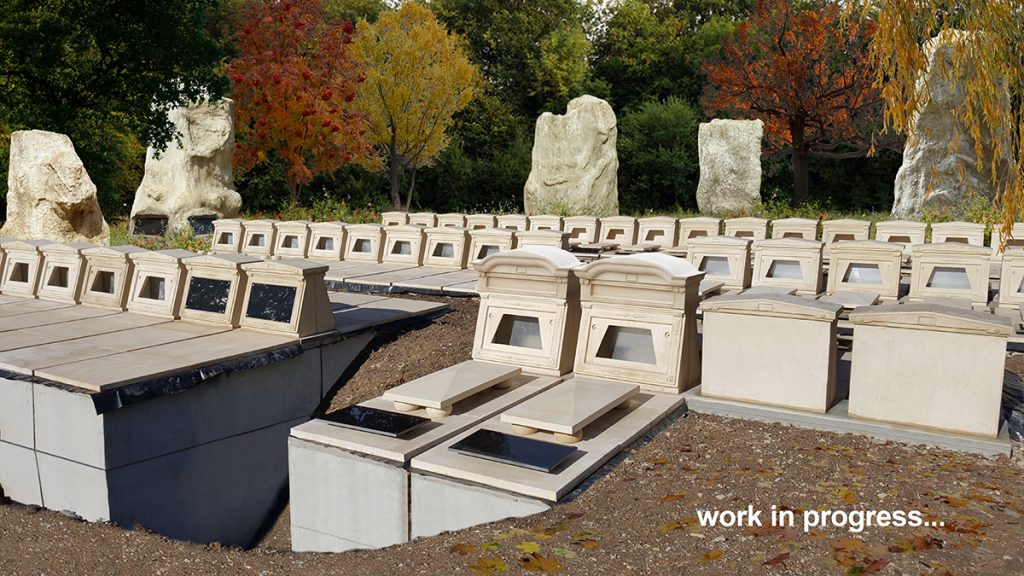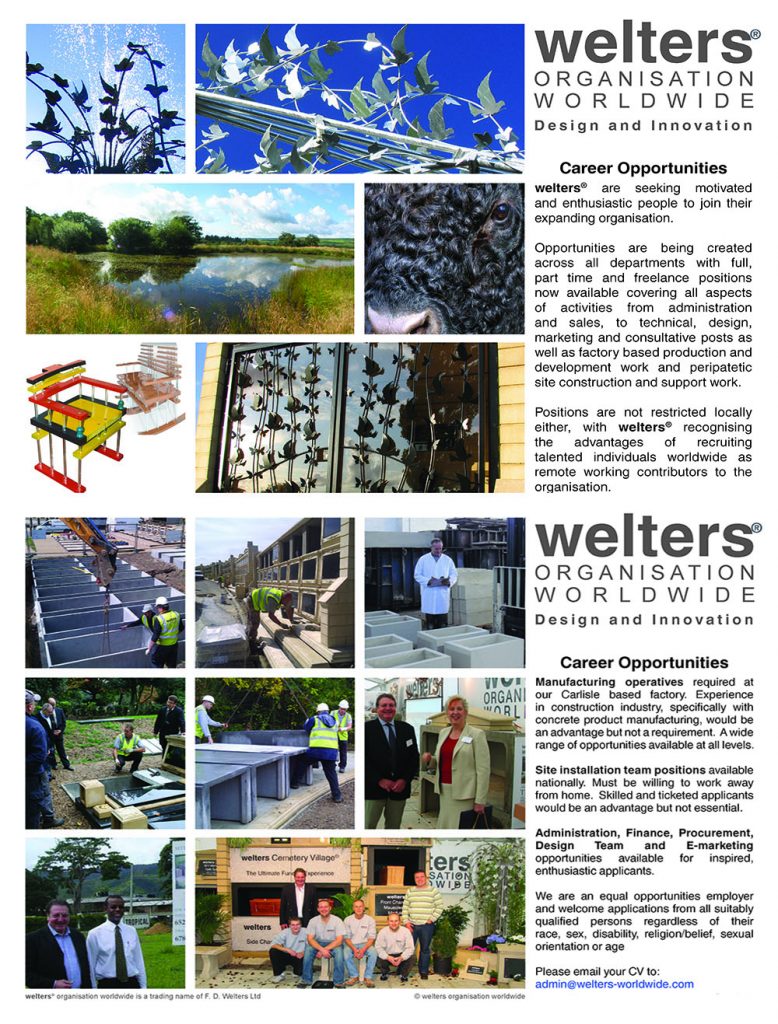welters October Company News

welters® are the Originators of Economic Development for Burial Authorities across the country and have supported and advised members, and developed new ideas for the industry, for over 30 years.
The company are nearing completion of an important cemetery development project which involves the use of previously unusable land within an extremely valuable resource once re-presented.
The impetus for this current development follows the successful delivery of similar schemes by welters®, thus creating potentially major, if not the major revenue earning income generation.
In similar mode, a development has been completed utilising hand crafted ‘standing stones’ installed within a Neolithic styled mounded area. The company’s proprietary stone memorial orbs have been produced in complimentary material, evoking ancient history.
Over its many years in the industry, welters®has tirelessly promoted and educated Cemetery and Crematorium Management in the benefits of their products and services. As a result, burial chambers and mausolea are now established as a standard service across the UK which welters®back with all support services to selected customers.
The welters® brand remains at the vanguard of design and innovation despite hazardous attempts by others to replicate their products and services.As a result, orders are increasing year on year, enabling further investment in manufacturing facilities and future expansion.
The company is also seeking to increase both production and site staff and would welcome enquiries from interested parties.
Please contact admin@welters-worldwide.com for further information.
The post welters October Company News appeared first on Latest News.



